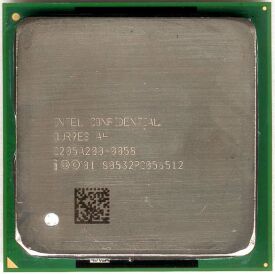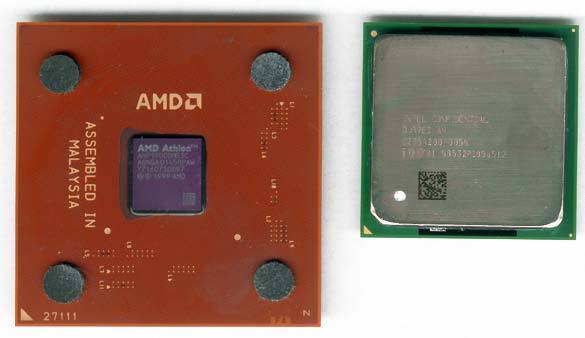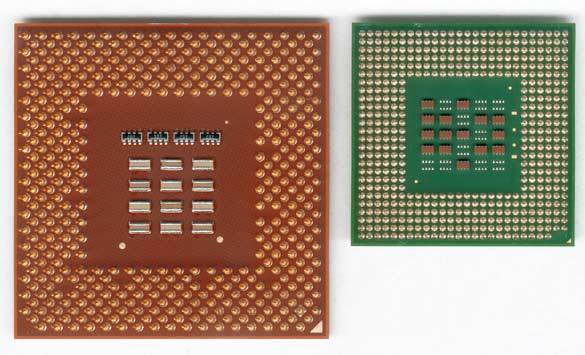The Final Battle: P4/2400 vs. Athlon XP 2100+ (2400+)
Intel P4/2400 - The Last One With 100 MHz FSB
Intel's strategy for CPU models focuses on the Pentium 4 as the leader in the mass market, as well as a continual increase in clock speed. Previously, this meant that since the introduction of the P4, the user has had to change platforms at least once. Nevertheless, the P4 chip has brought in a good profit margin (in tough times) for the company and has contributed to its positive record. On the other hand, the sales figures for the retail component market are still too low - among the real PC enthusiasts, hardly anyone goes for the P4. In this market segment, AMD remains the leader, offering its Athlon CPUs at a significantly lower price. The root of this problem lies in the hardware platform, which is much more expensive for the P4 than for the AMD Athlon XP. This scenario changes, though, if a large quantity of PCs equipped with the P4 are sold through discount chains. This is because typically in such cases only the cheapest components are used. This results in disappointment, however, because the high performance expectations for the P4 systems are never met. The inexperienced user is unable to compare this with a more powerful system equipped with the same processor.
Intel Pentium 4/2400 (Northwood Core) for 100 MHz FSB.
Since last summer, when the chip manufacturer introduced the Pentium 4/2000 (August 27, 2001) for Socket 423, the clock frequency of this flagship model has grown from 2000 MHz to 2400 MHz. In the meantime, the fabrication process was switched from 0.18 to 0.13 micron - and at the same time, the Socket 423 was replaced by the more compact Socket 478. Now it's clearly headed in the direction of higher clock speeds, which is where Intel has positioned itself in the market, as well as in relation to its competitor, AMD. And in any case, higher clock speeds are required in order to keep performance on a par with the AMD Athlon XP, which has a lower clock frequency. Now, the two competitors differ by 666 MHz, since the AMD Athlon XP 2100+ is clocked at 1733 MHz. As proved by many of the previous tests, the maximum clock speed of a processor is no longer the only factor in evaluating performance. Far more important is how the commands are handled in the context of the CPU architecture.
In comparison: AMD Athlon XP 2100+ and Intel Pentium 4/2400.
A back view of both processors.
Facts about the Pentium 4/2400: according to Intel's plans, this is will be the last CPU to have a 100 MHz FSB clock. Future P4 processors will run exclusively on an FSB clock of 133 MHz, which actually results in a slower core clock speed. After all, the multiplier lock will continue to exist. The Pentium 4/2533 with 133 MHz FSB will be launched at the beginning of May, with a fixed multiplier of 19.0. With respect to marketing, the faster system clock will even be sold with 533 MHz FSB, where the data is only transferred using the QDR process (rising and falling edges of the signal, double the amount with DDR).
An interesting new aspect is the shrinking of the die size, which Intel has put into practice starting with the launch of the P4/2400. In decreasing the distance between the individual units by 10% within the CPU core, the manufacturer can lower the production costs. For the user, however, this strategy brings no advantages.
Get Tom's Hardware's best news and in-depth reviews, straight to your inbox.
Current page: Intel P4/2400 - The Last One With 100 MHz FSB
Next Page Intel Pentium 4 Vs. AMD Athlon XP


